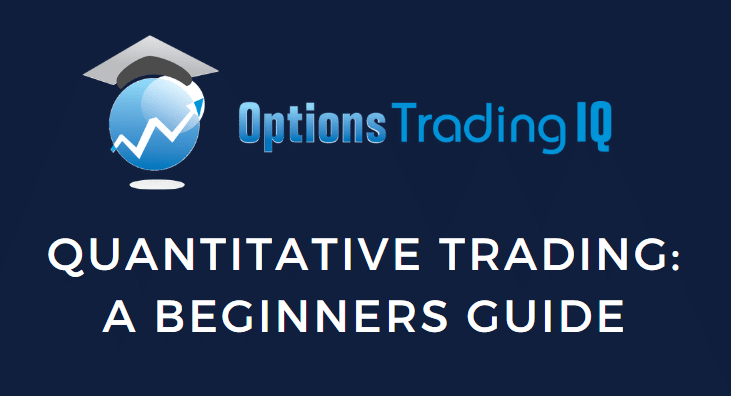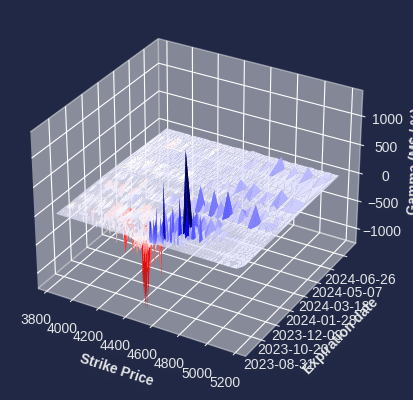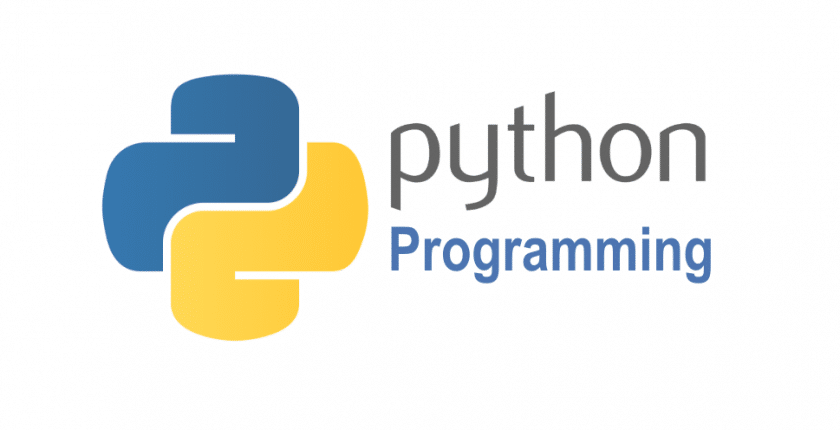

Quantitative trading, not to be confused with algorithmic trading, is a trading approach that relies on mathematical models and statistical analysis to make trading decisions.
This data-driven method contrasts with discretionary trading, which relies heavily on intuition and human judgment.
Quantitative trading has become increasingly popular in recent years, accounting for an ever-increasing amount of trading volume on the markets, especially the indexes and futures.
This beginner’s guide will explore quantitative trading, who quants are, how it differs from algorithmic trading, and the potential steps to become a quant.
Contents
What is Quantitative Trading?
Quantitative trading uses complex mathematical and statistical models to analyze market data and identify profitable trading opportunities.
Many of these systems rely on principles such as mean reversion, liquidity hunting, and auction theory.
This type of trading can be both high frequency, where thousands of trades are posted each day, or on a longer time frame, where the data dictates when to buy and sell on an inter day basis.
Now that you have the basics of what quant trading is: let’s take a look at some of the basic steps most quant systems use to go from idea to operational:
Data Collection
Quants need extremely large volumes of data. The types include market data, prices, volumes, bid and ask data, news, earnings reports, and other types of “alternative data.” This data is then utilized in the next step.
Research
In the research phase, all the data collected above is cleaned and utilized to start testing hypotheses. Sometimes these are simple, like a Moving average cross; sometimes, these are extremely complex, like how the global rainfall and humidity variances affect coffee future prices.

Development
Now that we have our data and hypotheses tested, we will develop a trading system. Here we look for triggers from the research phase to tell us when to buy and sell our instrument. We also look for management queues, such as when to buy a full position, buy a half, and close a trade at a stop.
Backtesting
This part is probably shown the most on the internet but is probably the least exciting. This is when you take the system you created in the previous three steps and code it to run automatically on simulated or historical data. It all will run in the background (often on larger server clusters for processing power), and it will spit out stats on the trades. You will then use these stats to refine your trading methodology until you are happy with it.
Forward Testing
Forward testing is pretty similar to just running the program live but is often done with live data on a simulated currency. This is where you can see how your system runs in real-time with real-time data. It’s also the last point to make any tweaks before it goes live.
The reliance on data and math often gives well-trained quants an edge because they can watch the market completely dispassionately and trade signals. There is no emotion involved in the trading.
What Does a Quant Do?
So now that we know how quant systems are developed, let’s look at some of the key responsibilities an individual quant may have inside a trading desk:
You will often be responsible for all of your datasets.
You will need to source them for yourself and clean any data that comes in that is dirty or not useful.
As a side note, data is considered dirty when it is incomplete or does not have all fields necessary for your task.

You would also be responsible for designing and building trading models and algorithms to generate buy/sell signals and rigorously backtesting models against historical data to optimize their inputs.
In addition to the programming above, keeping up with new techniques and technologies is also a vital role of a quant.
Python and C++ libraries are constantly updated and improved and require continuous learning.
The addition of Machine learning and Large Language Models as technologies are also expected to be implemented in many trading systems.
Finally, there will be a fair amount of monitoring and bug-fixing involved.
A well-trained quant must be able to watch the servers and resources daily and monitor their running programs for errors that pop up.
They will review their trade logs daily and their weekly results to ensure they are still hitting their targets and the trades are still firing off correctly.
Overall, the day-to-day work vitally relies on programming, data analysis, and analytical skills to be successful.
Creativity and problem-solving are critical in this fast-paced domain, as are a strong understanding of math, science, and programming.
The Difference Between Quantitative and Algorithmic Traders
Let’s take a quick detour and discuss the differences between an algorithmic and quantitative trader. While most quantitative traders are algorithmic, not all algorithmic traders are quants.
This may be confusing, but the simplest way to think about it is as follows: algorithmic describes the execution technique, whereas quantitative describes the trading style.
While the terms are sometimes used interchangeably, there are subtle differences between quantitative traders (quants) and algorithmic traders:
- Quants develop trading strategies and models, while algo traders focus on implementation and execution.
- Quants often have advanced academic backgrounds in mathematics, statistics, physics, or finance. Algo traders often come from more technical backgrounds, such as computer science.
- Quants spend more time researching markets, running statistical analyses, and building models. Algo traders spend more time programming trading systems than creating them.
- Successful quants have exceptional analytical and modeling skills with some programming capabilities. Excellent programmers who can automate strategies are usually the top algo traders.
- Quants tend to work for hedge funds, investment banks, or trading firms. Exchanges, brokerages, or tech companies often employ algo traders.
In summary, quants usually conduct research and strategy development.
Algo traders focus on the implementation and management of other people’s strategies.
Collaboration between the two roles is often critical in large funds and banks but is not 100% necessary in smaller institutions.
Becoming a Quant
Having read all the above, you think you want to get into the Quant game; how do you do it?
Becoming a quantitative trader requires a lot of preparation and work, but it is not impossible. The following are essential:
Educational Background: Most quants have an advanced degree in mathematics, statistics, computer science, physics, or economics. Knowledge sets usually cover machine learning, stochastic modeling, theoretical physics (you read that right), and financial engineering. Many top schools have entire programs devoted to this topic, but if you are past college or are not going to get into one of the Ivy League, those are the topics to cover.
Technical Skills: Programming languages commonly used include Python, R, MATLAB, C++, SQL, and Java. Database abilities and object-oriented programming allow quants to handle large financial data sets and deploy implementations of them quickly.
Math: Probability theory, time-series analysis, algorithm development, numerical methods, and theory provide a vital foundation. Linear algebra, multivariate calculus, and econometrics are also highly applicable. Many top funds also look for quants with solid Physics knowledge with topics like string theory.
Other Knowledge: Understanding financial regulations in various countries and regions is a must. In addition, instrument-specific knowledge and general market theory are vital to creating viable systems.
Experience: Internships or full-time work experience at an investment bank, hedge fund, or prop trading firm provide critical real-world preparation and contacts for further positions and contracts. If this isn’t a realistic possibility for you, it is possible, albeit rare, for you to land a job with a portfolio of research to display. The caveat here is the research must be incredible.
Tools Of The Trade
Getting familiar with the following tools, software, and methods will help give you a headstart in your quant journey.

Python – Arguably the most important one, Python is the most popular programming language for trading algorithms due to its extensive data manipulation libraries (NumPy, Pandas, Matplotlib, scikit-learn, and PyTorch are a few to get you started).
R – Open source programming language similar to Python, a real workhorse for data manipulation and analysis.
MATLAB – A leading platform for analyzing, developing, and testing trading models due to its mathematical functionality and ability.
QuantConnect – Cloud-based development platform for strategy building, backtesting, and live trading algorithms in C#, Python, and F#. It has an extensive library of data sets and a huge community of active users.
A Broker – Familiarize yourself with a few brokers and their accounts, margin, and trading rules. Also, be aware of any APIs they may have and what is required to access them. Finally, know how to place and manage your trades using the API.
Bloomberg Terminal – This is only the case if you are incredibly lucky or work or go to school with someone with a terminal. Their terminals are upwards of $20,000/year but include everything you need in finance. They have instantaneous market data for every market on the planet, as well as real-time news, information, and networking. They also have a fantastic API for quants.
Familiarizing yourself with these tools and systems, at the very least on a topical level, will help get you accustomed to what is expected from a quant.
Sample Trading Strategy
Here is a basic layout of how a quant might look at a mean reversion strategy.
First, they would pick an instrument. For our example, we will use the stock Apple.
They will download the ticker’s historical price, NBBO, and volume data for at least several years.
Next, they will clean the data of any missing or late prints and push the data into a database compatible with Python.
Here is where the fun begins; now we are looking for mean reversion, so we need to select a timeframe to look at.
Let’s say it’s on a daily basis, so we can catch a big move.
Using Python, the quant will aggregate all of the quote data into daily bars with OHLC and volume data.
Once this is done, we create our linear regression channel.
Python has a library for regression analysis, so we would load that and push all of our daily data through that.
Now that the data is cleaned, sorted, aggregated, and loaded, we must pick our actual signal. We decided that any time AAPL trades 2.5 standard deviations from the mean value, we will either short or long the stock with a take profit at the Mean for the last 50 periods (basically a 50-day moving average).
Using another Python library or QuantConnect, we load up our strategy, set a beginning balance and trade management parameters, and let the program do the rest.
Once it’s done, it will spit out a report with trades and stats that we can look at and tweak for improvements.
While this is extremely simplified, this presents a basic framework of a mean reversion strategy.
Quants build and iterate on these foundations utilizing their math and analytical skills to bring these strategies to the next level.
Wrapping It Up
Quantitative trading presents a fascinating career path in finance for those with strong mathematical and programming abilities.
It opens opportunities to create and implement data-driven trading strategies across stocks, derivatives, currencies, and other tradable instruments.
While challenging, the domain rewards innovative thinking and scientific rigor in generating incredible amounts of money.
This beginner’s guide summarizes most of the key concepts of quantitative trading and what a quant does.
We hope you enjoyed this article on quantitative trading.
If you have any questions, please send an email or leave a comment below.
Trade safe!
Disclaimer: The information above is for educational purposes only and should not be treated as investment advice. The strategy presented would not be suitable for investors who are not familiar with exchange traded options. Any readers interested in this strategy should do their own research and seek advice from a licensed financial adviser.











Excellent summary.
Thanks John.
Hi Gavin,
I am interested in your today’s blog. I will read it later.
By the way, I , by mistake erased yesterday’s blog and couldn’t find it.
Could you send it to me again?
Thanks,
Kazuo
You can find all articles here – https://optionstradingiq.com/blog/